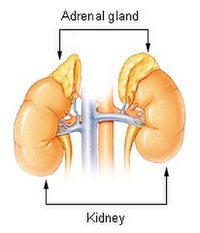
Risk of Mild Cognitive Impairment or Probable Dementia in New Users of Angiotensin II Receptor Blockers and Angiotensin-Converting Enzyme Inhibitors
Sign Up to like & getrecommendations! Published in 2022 at "JAMA Network Open"
DOI: 10.1001/jamanetworkopen.2022.20680
Abstract: Key Points Question Is initiation of angiotensin II receptor blockers (ARBs), compared with angiotensin-converting enzyme inhibitors (ACEIs), associated with a reduced risk of cognitive impairment, after controlling for potential pretreatment confounders? Findings This active-comparator, new-user… read more here.
Keywords: new users; angiotensin receptor; cognitive impairment; receptor blockers ... See more keywords

Sex Differences in Reported Adverse Drug Reactions to Angiotensin-Converting Enzyme Inhibitors
Sign Up to like & getrecommendations! Published in 2022 at "JAMA Network Open"
DOI: 10.1001/jamanetworkopen.2022.8224
Abstract: This cross-sectional study investigates differences by sex in reporting of adverse drug reactions associated with angiotensin-converting enzyme inhibitors combining global and prescription-corrected databases. read more here.
Keywords: drug reactions; converting enzyme; enzyme inhibitors; sex ... See more keywords

Angiotensin‐converting enzyme 2 inhibits endoplasmic reticulum stress–associated pathway to preserve nonalcoholic fatty liver disease
Sign Up to like & getrecommendations! Published in 2019 at "Diabetes/Metabolism Research and Reviews"
DOI: 10.1002/dmrr.3123
Abstract: Previous works indicated that the stress on the endoplasmic reticulum (ER) affected nonalcoholic fatty liver disease (NAFLD). However, there is no clear evident on the effect of the regulation of ER stress by angiotensin‐converting enzyme… read more here.
Keywords: fatty liver; endoplasmic reticulum; angiotensin converting; converting enzyme ... See more keywords

The use of angiotensin II receptor blocker is associated with greater recovery of cardiac function than angiotensin‐converting enzyme inhibitor in dilated cardiomyopathy
Sign Up to like & getrecommendations! Published in 2022 at "ESC Heart Failure"
DOI: 10.1002/ehf2.13790
Abstract: Angiotensin‐converting enzyme inhibitors (ACEis) or angiotensin II receptor blockers (ARBs) have been shown to be associated with recovery of cardiac function in patients with dilated cardiomyopathy (DCM). The aim of this study was to assess… read more here.
Keywords: angiotensin converting; converting enzyme; cardiac function; recovery cardiac ... See more keywords

Serum angiotensin‐converting enzyme levels indicating early sarcoidosis diagnosis and immunosuppressive therapy efficacy
Sign Up to like & getrecommendations! Published in 2023 at "ESC Heart Failure"
DOI: 10.1002/ehf2.14343
Abstract: This study aimed to determine the new cut‐off value of serum angiotensin‐converting enzyme (ACE) levels for detecting patients with sarcoidosis and to examine the change in ACE levels after the initiation of immunosuppressive therapy. read more here.
Keywords: serum angiotensin; converting enzyme; immunosuppressive therapy; angiotensin converting ... See more keywords

Angiotensin‐converting enzyme inhibitor/angiotensin II receptor blocker treatment and haemodynamic factors are associated with increased cardiac mRNA expression of angiotensin‐converting enzyme 2 in patients with cardiovascular disease
Sign Up to like & getrecommendations! Published in 2020 at "European Journal of Heart Failure"
DOI: 10.1002/ejhf.2020
Abstract: Coronavirus disease 2019 (COVID‐19) is a widespread pandemic with an increased morbidity and mortality, especially for patients with cardiovascular diseases. Angiotensin‐converting enzyme 2 (ACE2) has been identified as necessary cell entry point for SARS‐CoV‐2. Previous… read more here.
Keywords: patients cardiovascular; converting enzyme; disease; angiotensin converting ... See more keywords

A possible Fourier transform infrared-based plasma fingerprint of angiotensin-converting enzyme inhibitor-induced reversal of endothelial dysfunction in diabetic mice.
Sign Up to like & getrecommendations! Published in 2018 at "Journal of biophotonics"
DOI: 10.1002/jbio.201700044
Abstract: Angiotensin-converting enzyme inhibitors (ACE-I) display vasoprotective activity and represent the cornerstone in the treatment of cardiovascular diseases. In this study, we tested whether Fourier transform infrared (FTIR)-based analysis of blood plasma is sensitive to detect… read more here.
Keywords: plasma; angiotensin converting; converting enzyme; mice ... See more keywords

(−)‐Epigallocatechin‐3‐gallate inhibits human angiotensin‐converting enzyme activity through an autoxidation‐dependent mechanism
Sign Up to like & getrecommendations! Published in 2017 at "Journal of Biochemical and Molecular Toxicology"
DOI: 10.1002/jbt.21932
Abstract: We investigated the molecular mechanisms involved in the angiotensin‐converting enzyme (ACE) inhibition by (−)‐epigallocatechin‐3‐gallate (EGCg), a major tea catechin. EGCg inhibited both the ACE activity in the lysate of human colorectal cancer cells and human… read more here.
Keywords: converting enzyme; angiotensin converting; epigallocatechin gallate; ace ... See more keywords

Role of angiotensin‐converting enzyme insertion/deletion polymorphism in sudden cardiac arrest
Sign Up to like & getrecommendations! Published in 2019 at "Journal of Cellular Biochemistry"
DOI: 10.1002/jcb.27622
Abstract: This study aimed to investigate the relationship between angiotensin‐converting enzyme (ACE) insertion/deletion (I/D) polymorphism and to understand sudden cardiac arrest (SCA) in the Chinese population. read more here.
Keywords: sudden cardiac; deletion polymorphism; insertion deletion; converting enzyme ... See more keywords

Inhibitory properties of bambara groundnut protein hydrolysate and peptide fractions against angiotensin-converting enzymes, renin and free radicals.
Sign Up to like & getrecommendations! Published in 2017 at "Journal of the science of food and agriculture"
DOI: 10.1002/jsfa.8112
Abstract: BACKGROUND An increased rate of high blood pressure has led to critical human hypertensive conditions in most nations. In the present study, bambara protein hydrolysates (BPHs) obtained using three different proteases (alcalase, trypsin and pepsin)… read more here.
Keywords: protein; inhibitory properties; inhibition; angiotensin converting ... See more keywords

Green micellar HPLC analysis of three angiotensin-converting enzyme inhibitors in their mixtures with hydrochlorothiazide and modeling of their retention behavior by fitting to Foley's model.
Sign Up to like & getrecommendations! Published in 2017 at "Journal of separation science"
DOI: 10.1002/jssc.201700622
Abstract: We present an environmentally friendly method for the analysis of three angiotensin-converting enzyme inhibitors and hydrochlorothiazide simultaneously using a green micellar eluent for the first time. The chromatographic separation of enalapril maleate, lisinopril dihydrate, benazepril… read more here.
Keywords: three angiotensin; converting enzyme; angiotensin converting; analysis three ... See more keywords